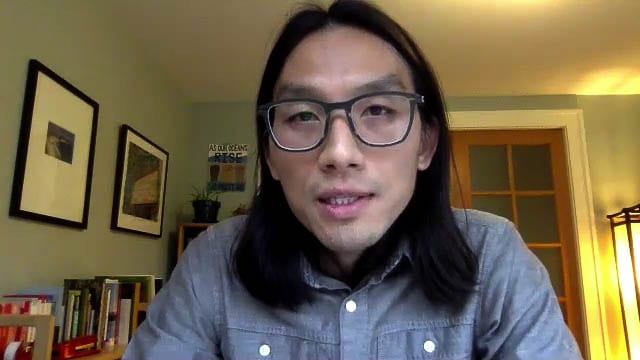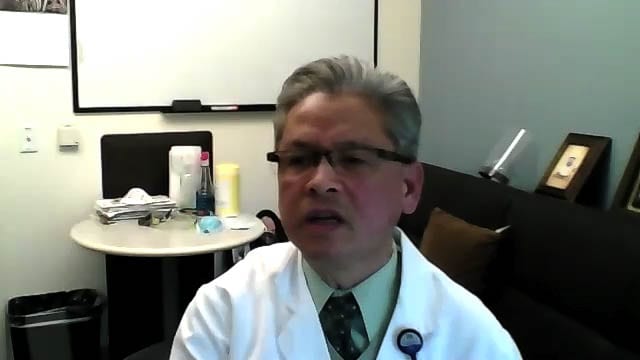With COVID-19 trends headed the wrong way, doctors warn gatherings could push hospital capacity to its limit
VANCOUVER — Just two months ago, Clark County was averaging 28 new cases of COVID-19 per day. Four weeks ago it was 42 cases per day. Today, that rate is closer to 120 per day, and growing.
“They are going up at an alarming rate,” said Clark County Public Health Officer Dr. Alan Melnick in a Zoom call with local media on Monday. “Our data show that the case numbers are increasing across all age groups and demographics, with those between the ages of 20 to 49 consistently having the highest numbers of new confirmed cases.”

The concern of Public Health, Melnick noted, is that cases tend to spread from younger populations to older people, who are much more at risk from the virus.
Over the weekend, Clark County Public health reported 310 new COVID-19 cases, and one death. It was the highest three-day total during the pandemic, and brings the total to 6,470 cases and 80 deaths. The county hit 5,000 cases just 12 days ago.
COVID-19-related hospitalizations hit 56 on Monday, including six presumed cases, accounting for 8.9 percent of licensed bed space in the county.
Clark County Public Health also adjusted the way they’re reporting other available bed space. As of Friday, they were reporting available ICU beds as a percentage of all total beds, rather than licensed ICU bed space.
After the adjustment, 25 percent of ICU beds in the county are available. Just under 82 percent of the county’s “acute care beds” were filled as of Monday.
“We, the folks in the healthcare system will be here for you, for your family, and our community,” said Raymond Lee, MD, chief medical officer with PeaceHealth Southwest Medical Center. “But this is also where we most urgently need your help, and asking you to be there for us.”

Lee said doctors treating COVID-19 patients have “developed a rhythm and a standardized approach” that is helping to prevent many more deaths than earlier in the pandemic, and bring down the mortality rate of the virus.
Still, he warned, a surge in new cases could lead to reduced quality of care for others needing medical attention.
“We do our best when we operate within our resources,” Lee said. “Help us avoid the surge that could overwhelm the system.”
Already, Hoa Ly, MD, medical director at Legacy Salmon Creek Medical Center said they’ve cut back on elective procedures by 25 percent in order to prepare for the surge.
Ly acknowledged that many are dealing with “pandemic fatigue,” but it’s no different for hospital workers faced with the realities of the virus each day, he said.

“It takes a big emotional and physical toll on the staff,” said Ly, “seeing a patient getting really sick, not being able to have family members. Some of them we have to talk to through an interpreter.”
As medical director, Ly said it has been challenging to maintain the morale of the doctors and nurses under his care.
“We all try,” he said, “and I know we’ve failed. We all do … We have to deal with this every day, and our fear is there. It’s there.”
Even so, Ly admitted that it is a difficult thing to ask members of the community to make as large a sacrifice as giving up gathering on Thanksgiving, or perhaps even Christmas.
“It’s very hard for us to overcome those emotions, get ourselves together and make those tough decisions,” Ly acknowledged. “We are social animals, we need to meet with people. And we have delayed that for a long time.”
The experts on Monday’s call fully acknowledged that the pandemic isn’t just about the virus. Lockdowns, masks, physical distancing, and remote learning have all led to a concerning rise in mental health trauma, addiction, and even suicide.
Dr. Ly’s recommendation to handle the stress is to take each day one at a time, and focus on the fact that your sacrifice is helping to slow a virus blamed for over 250,000 deaths in the United States, and 1.3 million people worldwide.
“It’s very difficult, I am with you. But we also are spiritual beings, we are fully capable of making sacrifices for a higher calling,” Ly said. “The virus is very dangerous, and powerful. But the virus can only do what we allow it to do.”
While orders issued Sunday by Washington Gov. Jay Inslee permit social gatherings if participants can quarantine for 14 days ahead of time, or 7 days with a negative COVID test no more than 48 hours ahead of time, the doctors on Monday’s media briefing said they wouldn’t recommend any socializing outside of your immediate family.
“Testing can give you a false sense of security,” said Dr. Alfred Seekamp, Chief Medical Officer at The Vancouver Clinic. “You are most symptomatic when you don’t know it. And, if you have a negative test 48 hours ago, and you are brewing the virus, you may be at your peak during that Thanksgiving dinner.”
Melnick added that his department is well aware of the sacrifice they’re asking people to make, giving up a Thanksgiving gathering.
“This is the poster child holiday for family gatherings,” he said. “And, given the isolation people have been feeling from the pandemic, and the want and need for social interaction, the Thanksgiving holiday is really tempting for folks, given their pandemic fatigue. And that is exactly what I’m concerned about.”
For now, both major hospitals in Clark County say they remain below capacity, and can stretch to accept more patients if necessary. And, while doctors, nurses, and other frontline workers are better equipped to weather this surge, the primary concern is that over-stressed healthcare providers lead to lesser outcomes.
“When we talk about hospital resources, we’re not just talking about beds,” said Melnick. “We’re talking about the doctors and the nurses and the other caregivers.”
Melnick said the public needs to be aware that a viral outbreak without any natural immunity or vaccine currently available can quickly become “exponential,” with numbers accelerating as the virus spreads.
“If we wait until we get to that point, then it’s like turning the Titanic around,” said Melnick. “We have hospital capacity, but there’s a lag between transmission, getting infected, getting sick, and then requiring hospitalization. And that can be several weeks.”
Clark County Public Health data for October showed 42 percent of cases for which an infection origin could be determined happened within the same household. While that may seem like a lot, experts say it means well over half of cases are originating outside the home.
Most of those (20 percent) were from social gatherings of 1-49 people, with the vast majority of those happening in small gatherings of less than 10.
“The stakes of our personal decision before us right now cannot be higher,” said Lee. “I think all personal decisions about adhering to ways to temper the spread of the virus will have a tremendous impact on whether our hospitals are overwhelmed in two weeks or not.”




